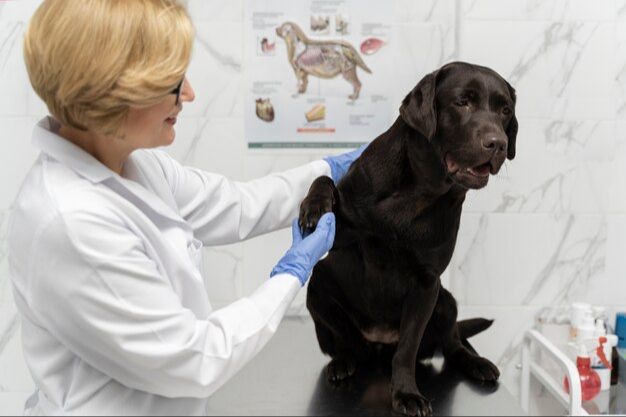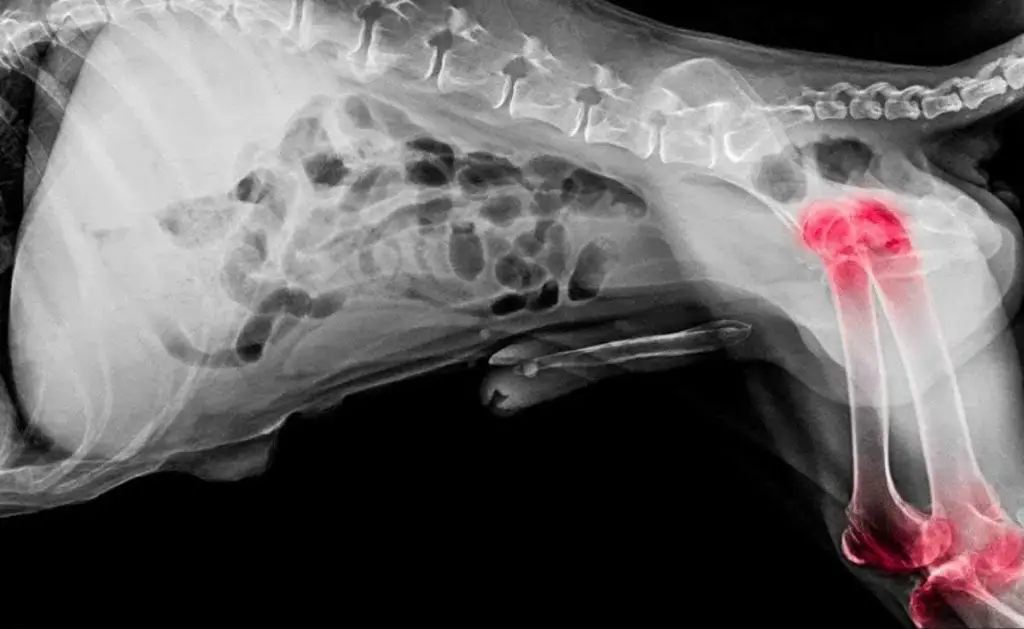Introduction
Cancer is one of the leading causes of death in dogs. About 1 in 4 dogs will develop cancer during their lifetime. Understanding the common forms of cancer in dogs and where they occur in the body is important for early detection and treatment. This overview covers the major anatomical locations where cancer arises in dogs, to help dog owners know what to look out for.
Being aware of the types and locations of cancer in dogs allows for closer monitoring and earlier veterinary intervention. Catching cancer early greatly improves the chances of successful treatment. Knowledge empowers dog owners to safeguard their beloved pet’s health and potentially add years to their life.
Skin
Skin cancer is the most common type of cancer found in dogs. Some breeds are at higher risk of developing certain skin cancers due to genetic factors. The main types of skin cancer seen in dogs include:
Melanoma – This cancer develops from melanocytes, the pigment-producing cells. It often starts as a benign mole that later becomes malignant. Melanoma most commonly affects dogs with dark pigmentation, such as Scottish Terriers, Miniature Schnauzers, and Golden Retrievers.

Mast cell tumors – These tumors develop from mast cells in the skin and often appear as raised lumps. They can be benign or malignant. Boxers, Boston Terriers, Bulldogs, and Labrador Retrievers are predisposed.
Squamous cell carcinoma – This cancer affects the squamous cells of the skin and has a poor prognosis if not caught early. Long-haired, light-skinned breeds are more susceptible.
Some signs of skin cancer in dogs include new lumps or bumps, sores that don’t heal, pigment changes, and itching or inflammation. Seeking prompt veterinary care is crucial for early diagnosis and treatment.
Mammary Gland
Mammary gland tumors are the most common type of tumor in unspayed female dogs. The risk increases with age if the dog is not spayed. Dogs spayed before their first heat cycle have a very low risk of developing mammary tumors. The risk continues to increase with each subsequent heat cycle.
There are several factors that increase a dog’s risk for mammary gland tumors:
- Being unspayed or being spayed after 2 years of age
- Not being spayed before the first heat cycle
- Having many heat cycles in their lifetime
- Being obese
Treatment typically involves surgically removing the tumors. Chemotherapy may be recommended after surgery to help prevent metastasis and recurrence. Prognosis depends on several factors including tumor type, size, location and whether it has spread. Early detection and treatment is key.
Lymphoma

Lymphoma is a form of cancer that originates in the lymphocytes, a type of white blood cell. In dogs, lymphoma usually starts in the lymph nodes or spleen before spreading to other areas of the body. Lymphoma is one of the most common cancers seen in dogs.
There are several different forms of canine lymphoma, classified by the type of lymphocyte the cancer starts in:
- B-cell lymphoma – Starts in B lymphocytes
- T-cell lymphoma – Starts in T lymphocytes
- Natural killer cell lymphoma – Starts in natural killer lymphocytes
Some types of lymphoma are also categorized based on how quickly they progress:
- Indolent lymphoma – Slower growing
- Aggressive lymphoma – Faster growing
Lymphoma is diagnosed through a biopsy of an affected lymph node, bone marrow, or other tissue. Staging tests like bloodwork, imaging, and bone marrow aspirates help determine how far the cancer has spread. Lymphoma is staged from I to V based on the locations it has reached.
Treatment usually involves chemotherapy and possibly radiation. With treatment, dogs with lymphoma have a decent prognosis overall. Indolent forms tend to have better outlooks than aggressive forms. Early detection and treatment are key to maximizing outlook.
Bone Cancer in Dogs
Osteosarcoma is the most common type of bone cancer seen in dogs. It accounts for roughly 85% of all canine bone tumor cases. Osteosarcoma most often affects the bones of large and giant breed dogs. It is extremely aggressive and fast growing.
The average age of onset for osteosarcoma is between 6-10 years old. However, it can develop in dogs of any age. Larger breeds tend to develop it at a younger age, while smaller breeds tend to be older when diagnosed. Male dogs are at a slightly higher risk than females.

The most obvious symptom of osteosarcoma is lameness and swelling in one of the legs. The lameness may come and go at first. But it tends to worsen rapidly as the tumor grows. Most often, the tumor originates near the shoulder or knee joints in the front legs. X-rays, MRIs, and bone biopsies are used to definitively diagnose osteosarcoma.
Amputation of the affected limb combined with chemotherapy is the most common and effective treatment. Amputation alone does not fully treat the cancer since metastases are common. Chemotherapy helps treat cancer cells that have spread to other areas. Some dogs can avoid amputation if the tumor is located in a leg bone that can be replaced with an implant. But this is not as effective as amputation and carries a higher risk of fracture. Pain medications and palliative radiation are options for inoperable or metastatic tumors.
Bladder
Transitional cell carcinoma is the most common type of bladder cancer in dogs. This cancer starts in the transitional cells that line the inside of the bladder. Certain breeds like Scottish Terriers have a genetic predisposition. Other risk factors include exposure to pesticides, insecticides, and heavy metals. Diagnosis often starts with a urinalysis to look for blood in the urine. An ultrasound allows visualization of masses in the bladder wall. To confirm the diagnosis, a biopsy is needed.
Lung
Lung cancer is relatively uncommon in dogs compared to other pet species. However, it represents approximately 2% of canine cancer diagnoses. The majority of canine lung tumors arise from metastasis of cancers originating elsewhere in the body. The most common metastatic tumors affecting the lungs arise from the mammary gland, musculoskeletal system, and hemolymphatic system.
Primary lung tumors are less common in dogs than metastatic tumors, but still represent an important cancer diagnosis. The most common primary lung tumors in dogs are adenocarcinomas, followed by bronchoalveolar carcinomas and squamous cell carcinomas. Other primary lung tumors such as adenosquamous carcinomas, undifferentiated carcinomas, and sarcomas occur less frequently.
Diagnosis of primary lung tumors requires imaging such as x-rays or CT scans, but definitive diagnosis is made via cytology or histopathology. Treatment options include surgery, radiation therapy, and chemotherapy. Prognosis depends on tumor type and location, but primary lung tumors tend to have more favorable prognoses than metastatic lung tumors if caught early.
Nasal Cavity
Cancer of the nasal cavity and sinuses is relatively uncommon in dogs. The nasal cavity and sinuses are the hollow spaces within the nose and skull that allow airflow and produce mucus.
The most common nasal tumor in dogs is adenocarcinoma, which arises from the nasal glands. Carcinomas and sarcomas can also sometimes form in the nasal cavity.

Common symptoms of nasal cancer in dogs include:
- Nasal discharge – can be one-sided or both sides
- Sneezing or difficulty breathing
- Facial deformity or swelling
- Loss of smell
- Eye discharge or swelling
- Bleeding from the nose
- Head shaking or facial rubbing/scratching
Treatment options for nasal cancer in dogs include radiation therapy, chemotherapy, and surgery to remove the tumor. Unfortunately, the prognosis is generally poor due to the difficulty accessing and completely removing nasal tumors. Palliative radiation can help control symptoms and improve quality of life in advanced cases.
Testicular
Testicular cancer is rare in dogs, but there are two main types to be aware of: seminoma and Sertoli cell tumors. Seminomas arise from the sperm-producing cells and generally form slow-growing masses in one or both testicles. Sertoli cell tumors originate from nursing cells within the testes and tend to be more aggressive. Both tumor types occur primarily in older, unneutered dogs.
The most effective way to reduce a dog’s risk of testicular cancer is to neuter them at an early age. Neutering not only eliminates the source of testicular tumors but also reduces hormone production that can stimulate cancer growth. So for male dogs not intended for breeding, neutering before 6 months of age is recommended to protect against testicular cancer later in life.
Testicular tumors may appear as enlargement or swelling of one or both testicles. Since the condition is uncommon in neutered dogs, any abnormalities of the testes in “fixed” males should be evaluated by a veterinarian immediately. If caught and treated early, testicular cancer has a good prognosis.
Conclusion
In conclusion, the most common sites for dogs to develop cancer are the skin, mammary glands, lymph nodes, bones, bladder, lungs, nose, and testicles. Cancer can develop in dogs at any age, but older dogs are more susceptible. That’s why regular veterinary checkups are so important, especially as dogs age. Early detection of cancer greatly improves the chances of successful treatment. Pet owners should monitor their dog’s health and be alert for any unusual lumps, growths, discharge, or changes in behavior that could indicate cancer. Consult a veterinarian promptly if cancer is suspected. While cancer in dogs is common, the good news is that many cancers are treatable if caught early. With vigilance and regular vet visits, dog owners can help protect their pets against this disease.